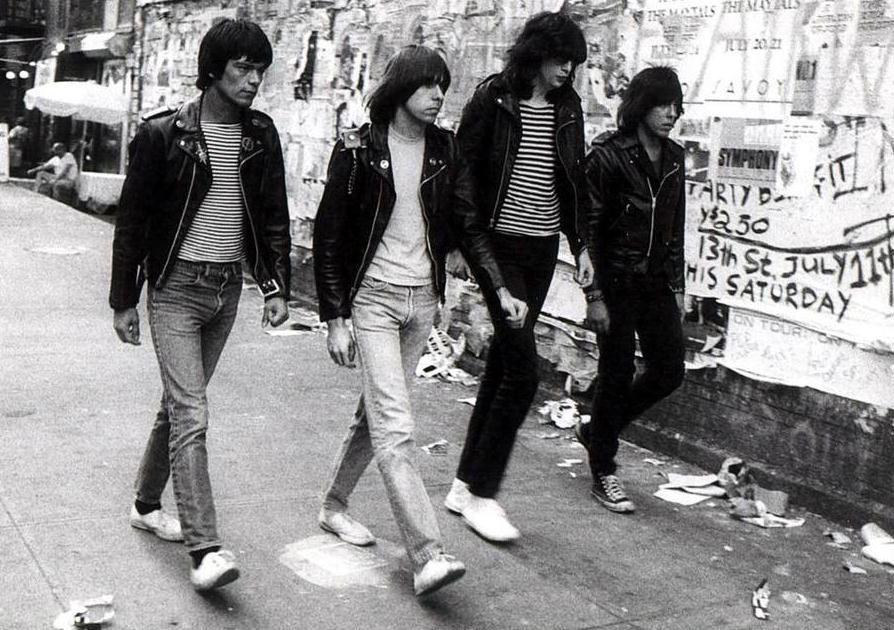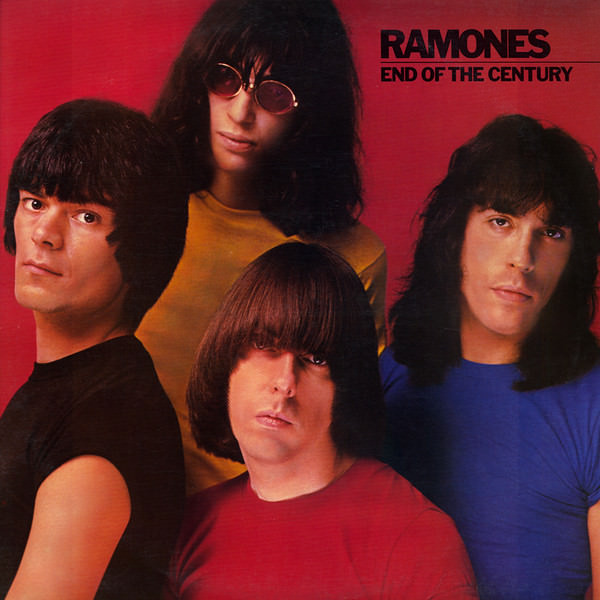End of the Century: The Story of the Ramones
 End of the Century may be one of the saddest rock documentaries ever made. All of the original members of the Ramones are now dead; one of them, Dee Dee, died (of a heroin overdose) before the film was even released. The making of this film was thus a race against time.
End of the Century may be one of the saddest rock documentaries ever made. All of the original members of the Ramones are now dead; one of them, Dee Dee, died (of a heroin overdose) before the film was even released. The making of this film was thus a race against time.
The influence of the Ramones’ loud, simple, defiantly dumb and abrasively catchy music can’t be underestimated. At a time when they couldn’t get arrested in the US, their 1976 performance in London influenced members of the Sex Pistols and the Clash to speed up their music. Joe Strummer speculates that a large percentage of the crowd went on to start their own punk bands. When members of the Damned saw them on the same tour, for example, they played their first show two days later. Though never popular with mainstream America, the Ramones had a profound influence on such US hardcore groups as The Dickies, Sonic Youth, the Dead Kennedys, Bad Brains and Black Flag.
 Fields and Gramaglia’s movie will be the primary Ramones document for ages. It tells the compelling story of how four Queens misfits (none of them surnamed Ramone) bonded over their interest in Iggy Pop and glam rock (especially proto-punkers the New York Dolls). Taking their name from Paul McCartney’s use of the name Paul Ramon when he performed as a Silver Beetle, the Ramones set out armed with Joey Ramone’s deep history of rock and roll, Johnny Ramone’s near-dictatorial vision for branding the group, and Dee Dee Ramone’s singularly silly lyrics – words that spoke to thousands of misfit listeners.
Fields and Gramaglia’s movie will be the primary Ramones document for ages. It tells the compelling story of how four Queens misfits (none of them surnamed Ramone) bonded over their interest in Iggy Pop and glam rock (especially proto-punkers the New York Dolls). Taking their name from Paul McCartney’s use of the name Paul Ramon when he performed as a Silver Beetle, the Ramones set out armed with Joey Ramone’s deep history of rock and roll, Johnny Ramone’s near-dictatorial vision for branding the group, and Dee Dee Ramone’s singularly silly lyrics – words that spoke to thousands of misfit listeners.
 B&W footage of early performances at the East Village CBGB are powerful, raw punk uber texts. The relentless wall of sound they created, one short blast of uncompromising “noise” after another was new and transmogrifying. That such a sound came from musically untrained youngsters is a mystery. Diagnosed with severe OCD in his teens, Joey Ramone didn’t seem to have much of a future. His mother was told by his physician that Joey would never be able to function in society. Quiet and shy Joey was able to morph into a completely different person onstage, though, somehow becoming the coolest person in the room and inspiring burgeoning musicians everywhere.
B&W footage of early performances at the East Village CBGB are powerful, raw punk uber texts. The relentless wall of sound they created, one short blast of uncompromising “noise” after another was new and transmogrifying. That such a sound came from musically untrained youngsters is a mystery. Diagnosed with severe OCD in his teens, Joey Ramone didn’t seem to have much of a future. His mother was told by his physician that Joey would never be able to function in society. Quiet and shy Joey was able to morph into a completely different person onstage, though, somehow becoming the coolest person in the room and inspiring burgeoning musicians everywhere.
End of the Century superbly illustrates the group’s frustration as, over decades, US radio refused to play their records, their LPs never sold much, and groups influenced by them became enormously successful. Their last-gasp gambit to have legendary record producer Phil Spector produce an album for them failed; Spector insisted on relentless retakes while brandishing a gun. After all that, and despite critical acclaim, the LP still didn’t get near the top of the charts.
Included in the abundance of rare footage is a music video from Dee Dee’s ’80s solo rap phase, containing some of the laughingly worst hip-hop imaginable. End also interviews fellow CBGB punk artist Blondie and punk historian Legs McNeil (his 1975 Punk magazine gave the movement its name). The film’s interview with Johnny Ramone revealed him to be humorless, strident, almost sullen. The Clash’s Joe Strummer (also since deceased) makes a vivid and convincing argument for the influence of the Ramones; he was one of the British youngsters hanging around the Ramones’ London dressing room trying to meet them in 1976. He told Joey, by way of introduction, that the Clash couldn’t play well, to which Joey responded, in short: well, you should hear us – we’re awful!
Packed with such extras as Marky Ramone giving a presentation on drum techniques and a Joey Ramone radio interview, the Rhino DVD package makes End of the Century a must-own document for fans of the era.
—Michael R. Neno, 2018 Nov 12